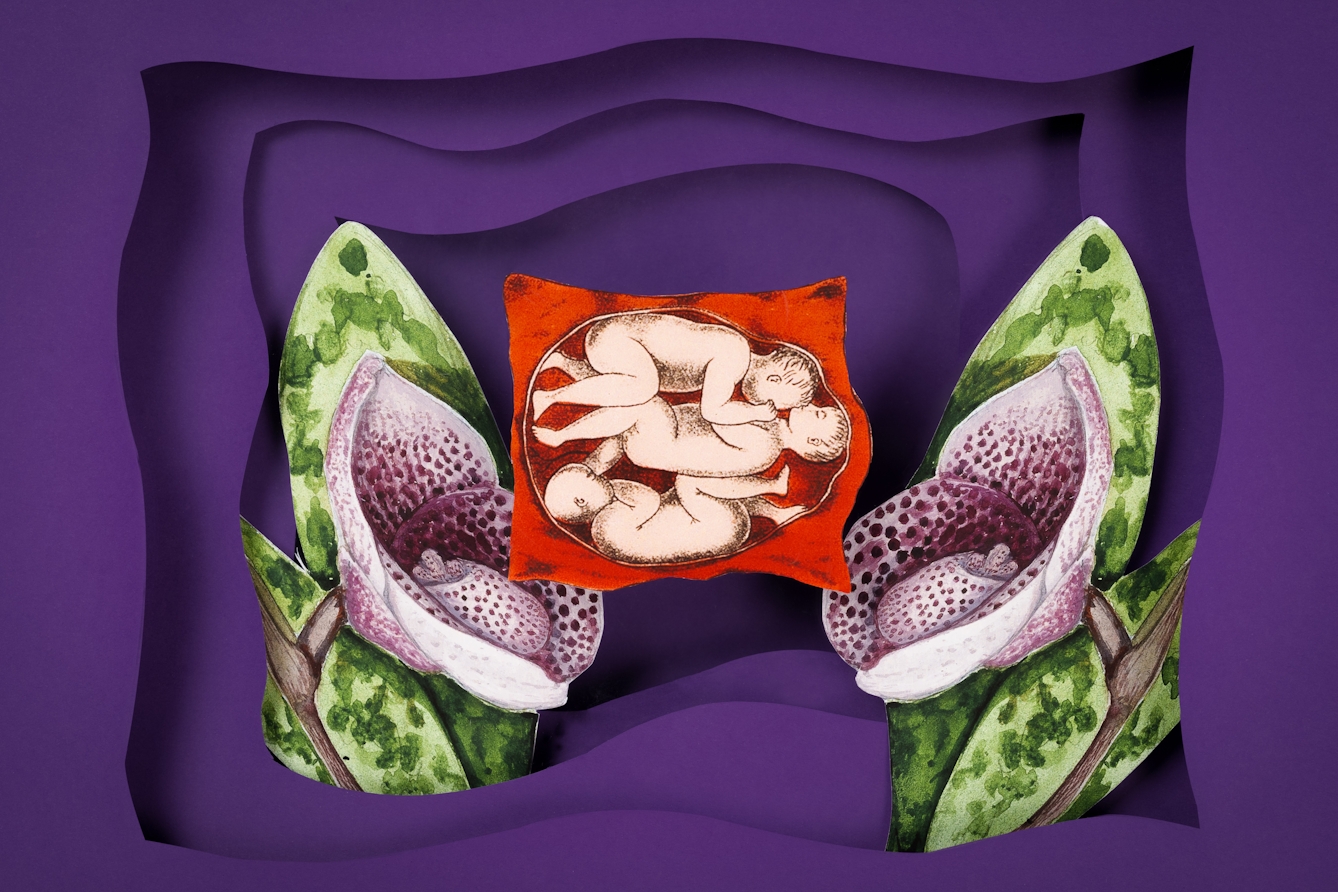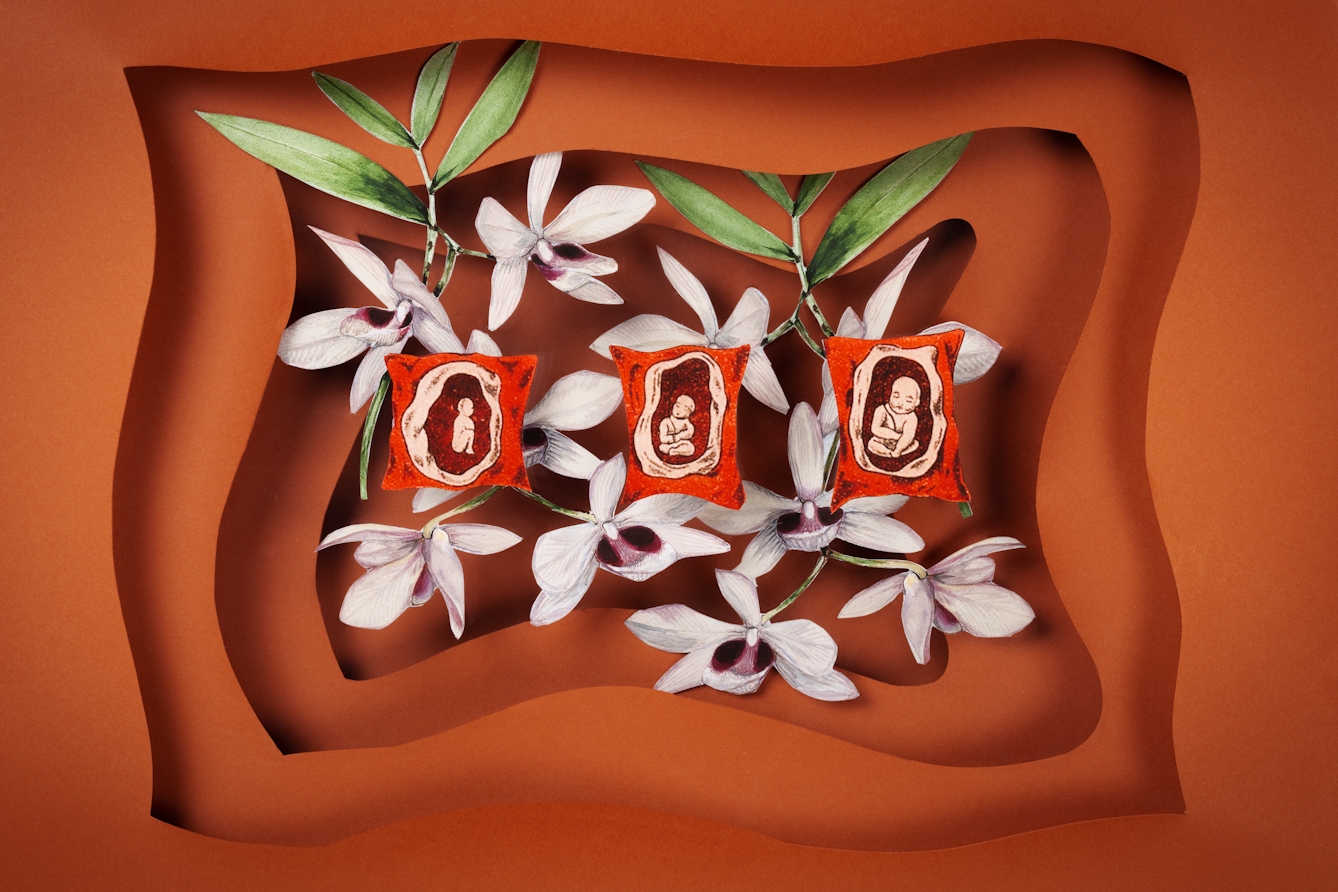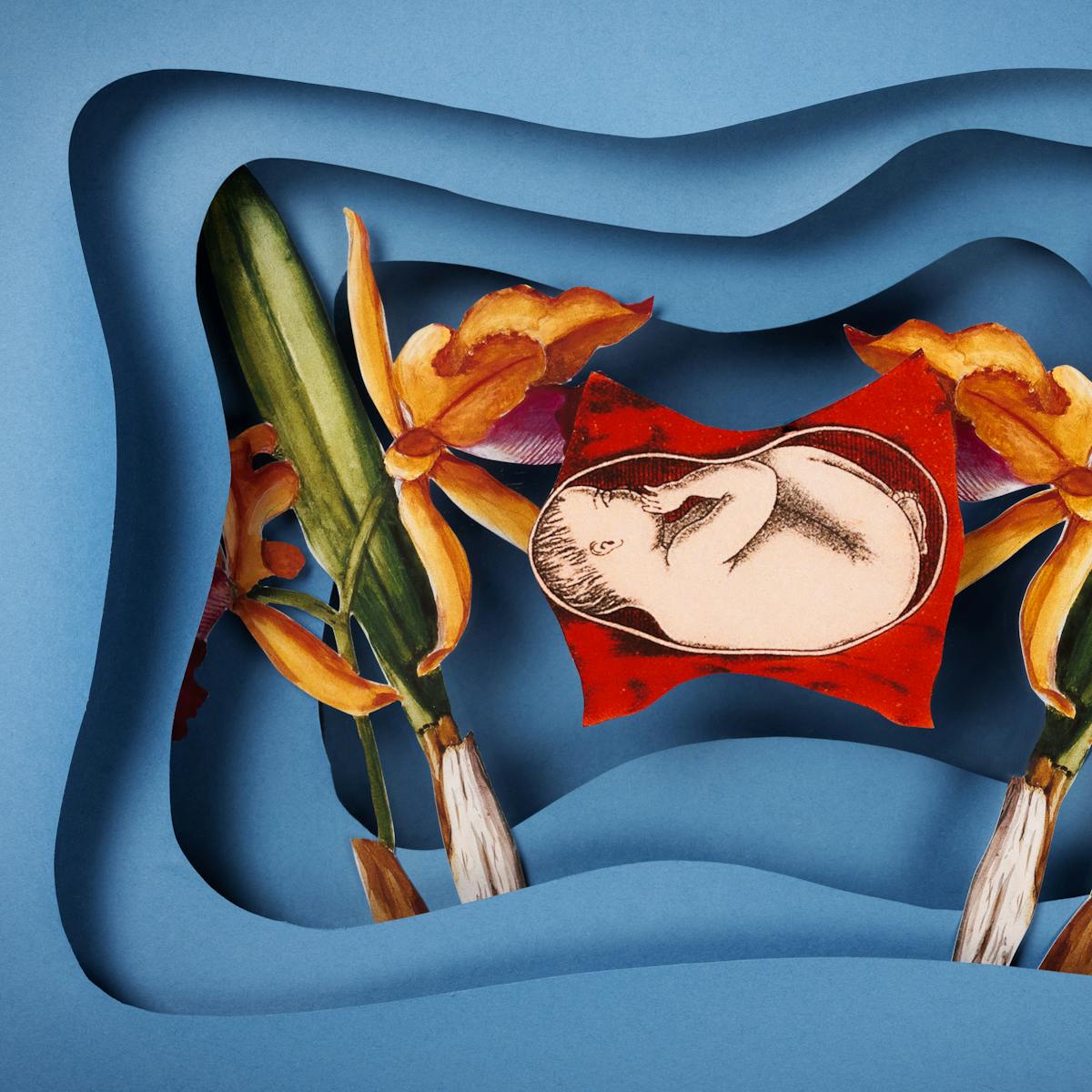Claire Horn’s book, ‘Eve: The Disobedient Future of Birth’ delves into the ethics and politics around human rights, birth and artificial wombs. In this extract, Claire traces how care of preterm babies has developed over the last 200 years: from the heated glass boxes pioneered by Victorian scientists to today’s ‘bio-bags’, which could soon provide extremely preterm babies with a liquid, womb-like environment.
Of incubators, orchids and artificial wombs
Words by Claire Hornphotography by Steven Pocockaverage reading time 9 minutes
- Book extract
If you are reading this, the one thing that I know to be true about you is that someone, somewhere, carried you in their body before you were a person. Someone gave birth to you.
As I write this sentence, I can feel my own baby move in my uterus. I don’t know whether the person who gestated you is your mother or not, but I know they too probably felt the indescribable sensation of your limbs shifting under their skin. And I know that before you were big enough to be felt – before you had even taken the shape of a human baby – their body was your home.
I know that, at some point, they probably wondered when, exactly, you would deign to be born. I feel as though I have been pregnant for more than a year, and simultaneously as if this period of my life is passing in the blink of an eye.
Pregnancy time, as a friend put it recently, is all lies. Our due dates are guesstimates and, for the most part, we simply do not know when our babies will decide to show up. They could arrive closer to what is really ten months, or they could arrive dangerously far in advance.
Growing babies like orchids
If you close your eyes, you can probably conjure up an image of an incubator. But not so very long ago, in 19th-century London, during the first years of human incubation, it was strange indeed to witness a baby enclosed in a miniature transparent box. It was much stranger still to learn that after a few weeks of being warmed in this way, a previously struggling infant could emerge, ready to be reunited with its parents.
Before the introduction of the first modern incubators in Europe in the late 1880s, mothers and midwives practised the common-sense principle that an ailing baby might be helped by keeping it swaddled and warm. However, the incubators that arrived at the turn of the century were thrilling to a public that could not fathom the survival of an infant in this space of air, metal and glass, between its mother’s womb and the world.
The apocryphal story holds that the French physician Stéphane Tarnier visited the Paris Zoo with his mind on the high death rates among newborns in the wards of the Paris Maternity Hospital. Watching how chicks thrived in a warming contraption fashioned by the zookeeper Odile Martin, Tarnier asked whether it might be possible to craft a similar kind of structure for infants. Martin obliged and the couveuse, or ‘brooding-hen’ incubator, made its debut.
While Tarnier’s incubators would begin in a hospital setting, they soon became a fixture of a much more unexpected locale: the fairground. In 1896 the paediatrician Alexandre Lion and the self-proclaimed physician Martin Couney would open the Kinderbrutenstalt (‘child hatchery’) to eager droves of spectators at the Great Industrial Exposition in Berlin.
Couney would eventually return home to the United States, where he established a permanent “incubator baby show” at Coney Island’s Luna amusement park in 1903. When the first show was launched in Britain at the ‘Victorian Era Exhibition’ at Earl’s Court in 1897, the public was so enraptured that a song about breeding a nation “by means of incubation” became a swift hit that summer.
Contemporary commentators, divided between horror and delight, fed the craze. A rumour swirled that it had become possible to grow babies like orchids in a hothouse: treat them with light, heat and a safe corral, and up they sprouted.

“Incubators that arrived at the turn of the century were thrilling to a public that could not fathom the survival of an infant in this space of air, metal and glass, between its mother’s womb and the world.”
The Graphic magazine published an image of a well-heeled crowd gathered behind a velvet rope, leaning keenly towards the peculiar glass-fronted boxes. Palm trees add a verdant dimension to an otherwise mechanical picture. Nurses stand in neat rows, seemingly poised for action. The small clocks pinned to their white aprons remind the viewer that these are not people at leisure, but professionals at work.
Below, the caption reads: “An Artificial Foster-Mother”. This was the root of what made the technology so enchanting. It seemed possible, both to the day-trippers who marvelled at the babies in their warming boxes, and to the physicians who managed them, that infants might soon be grown outside the human body.
It seemed possible, both to the day-trippers who marvelled at the babies in their warming boxes, and to the physicians who managed them, that infants might soon be grown outside the human body.
A full-term pregnancy is 40 weeks, and Tarnier’s incubators would likely have held infants not less than 38 weeks old. Yet the physician boasted that he was on the cusp of enabling almost the entire latter half of gestation to occur through his technology.
Despite the caveats of other emerging experts on the incubator, commentators in medical publications like The Lancet and the British Medical Journal were quick to believe that an artificial womb had arrived. One contributor argued that the only change that might make the technology more precisely like a human uterus would be if infants were suspended in artificial amniotic fluid.
But, another author conceded, this could cause the baby to drown, so the innovative use of warm air in glass was the closest possible imitation. With this feat already accomplished, surely it wouldn’t be long before the entire process of gestation could be facilitated through these means.
Animal trials for artificial wombs
The Victorians may have been comically optimistic in their certainty that artificial wombs were just around the corner, but in the 21st century we have finally arrived at the brink of this peculiar dream becoming plausible.
In 2017 researchers at the Children’s Hospital of Philadelphia (CHOP) released news of successful animal trials of the first partial artificial womb, a platform they dubbed “the bio-bag”. They had achieved what even the most confident physicians of the 1890s believed to be impossible: they had re-created the liquid environment of the uterus.
Any baby born before 37 weeks is considered premature, with any birth before 32 weeks considered very preterm. From 28 weeks, in a well-equipped hospital, an infant has a good chance of survival.
While contemporary technologies can be used to assist extremely preterm babies born as early as 22 weeks, mortality remains high. The best that can currently be done for these infants is the provision of emergency care to treat the complications of being born before their organs have developed sufficiently to function in the outside world.
With an estimated survival rate of just ten per cent for babies born at 22 weeks, approximately one third of those who live suffer significant health issues. The success of the bio-bag animal trials raised the possibility that these health complications could be prevented, and that a neonate born nearly four months before their due date could recover in good health.

“The Victorians may have been comically optimistic in their certainty that artificial wombs were just around the corner, but in the 21st century we have finally arrived at the brink of this peculiar dream becoming plausible.”
An extremely premature lamb fetus was placed inside a translucent polyurethane bag and was buoyed by artificial amniotic fluid. Like the fluids that surround a baby in a pregnant person’s body, this synthetic liquid delivered nutrients to the neonate.
After much trial and error, researchers were able to use an external pump that fed oxygen into the bio-bag and flushed out toxins to create a workable approximation of the placenta, the extraordinary organ that grows in pregnancy to connect the fetus to the uterus.
The technology ultimately allowed scientists to successfully gestate lamb fetuses from the equivalent of approximately 22 to 24 weeks in a human until they were fully developed (at the equivalent of around 28 weeks) and could be extracted in good health.
In 2019 the group announced a second round of promising animal trials. The process of securing Food and Drug Administration (FDA) approval for trials with human fetuses is now under way, with hopes that this work might begin within the next few years.
Meanwhile, as of 2022, a team working between Japan and Australia has completed two animal trials of a similar platform, which they are calling Ex-vivo Uterine Environment Therapy, or EVE. Unlike the boastful claims of Stéphane Tarnier, the group has been careful to caveat that they have no intention of ‘replacing’ human pregnancy.
Of course, their emphasis that this project is in no way intended to facilitate gestation outside the body is somewhat undercut by the curious choice to name it after the biblical first woman.
Their research has shown promise with animal fetuses at an even lower gestational threshold and birth weight than those in the bio-bag experiments, with the intention to treat human babies born as early as 21 weeks – just shy of halfway through a full-term pregnancy.
And in the Netherlands in autumn 2019, a multidisciplinary research team announced plans to create their own partial artificial womb within five years. Using strikingly lifelike 3D-printed model neonates equipped with sensors, and replicating features such as maternal heartbeat sounds, the team plans to create a technology that can not only gestate extremely premature babies, but also track the specific needs of a given infant and readjust the conditions accordingly.
These projects are distinct from one another in experimental design. They share the potential, however, to revolutionise what is possible in the care of extremely preterm babies. Existing forms of neonatal care are emergency interventions. The baby is given treatments to stave off the effects of being born with significantly underdeveloped organs.
The artificial womb, in contrast, extends the period of gestation to prevent these complications from arising to begin with. If it works, it will enable the infant to keep growing as though it had not yet been born.
And with scientists anticipating human trials within the next few years, artificial-womb technology is no longer purely speculative. Researchers are finally on the cusp of achieving what Stéphane Tarnier could only imagine 140 years ago.
Victorians were impressed by the sight of almost full-term babies in glass boxes – imagine how transfixed they would have been by the research now in progress. The ‘before’ and ‘after’ images released by the bio-bag team were eerie and briefly ubiquitous. In the first, a floating, pink-skinned, wrinkled lamb fetus sleeps adrift in a transparent bag. In the second, it has grown soft white wool and its body presses against the plastic surface, waiting to be born.
These pictures evoke much the same reaction that people once felt when they first encountered incubators: the curious sensation of peering into the future.
‘Eve’ is out now.
In ‘A history of gestation outside the body’, Claire Horn draws on images in Wellcome Collection’s archive to argue that, when it comes to imagining the future, the past offers some crucial clues about the different paths external gestation might take.
About the contributors
Claire Horn
Claire Horn is a Killam postdoctoral research fellow at Dalhousie University’s Health Law Institute. Her work over the last six years has focused on law and policy governing sexual and reproductive health, rights and technologies. She has written for a variety of academic and nonfiction publications, including the Journal of Medical Ethics, the Medical Law Review, Feminist Legal Studies, Catalyst, Aeon, and Lady Science.
Steven Pocock
Steven is a photographer at Wellcome. His photography takes inspiration from the museum’s rich and varied collections. He enjoys collaborating on creative projects and taking them to imaginative places.


